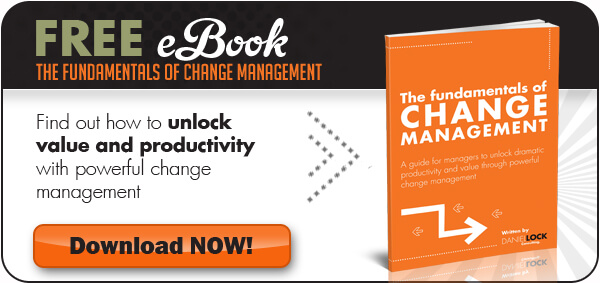If you want your organisation to become a leader in its industry, then you need to learn how to engage employees, but you also need to bring your people on board with the necessary change that is needed to reach the next level and beyond.
Change management is an art, and I’ve written before about how to foster a change environment and the importance of employee engagement. However, such an environment shouldn’t be reserved for when periods of big change are on the close horizon. There’s strong evidence that treatment of employees is a major factor in a company’s profitability.
How to Engage Employees: The long term benefits of treating employees well
Companies with great employee relationships benefit from lower staff turnover. That has a knock-on effect on costs – with less time and money spent recruiting and training – as well as productivity. Customer relationships also benefit from the knowledge of great service from a company that retains its staff.
This all evidences on the bottom line, with lower costs leading to higher profits: and that’s great for a company’s value.
Great places to work make great places to invest
There are numerous examples of companies that are considered great places to work and that have seen their share prices soar.
Each year Fortune produces a list of the 100 Best Companies to Work For. It is, perhaps, unsurprising that these companies have a lower than average staff turnover rate. Take the 2012 list, for example. Across IT – an industry notorious for job jumping – companies saw an average voluntary exodus of nearly 15%. Among the IT companies in the 100 Best Companies to work for this rate was less than 6%. Professional Services saw a turnover rate of around 11.5% among Fortune’s list – but if you think that’s high, compare it to the industry average of almost 25%.
Consider what effect a quarter of your staff changing would have on your organisation’s profitability.
According to Russell Investment Group, public companies in the Fortune 100 Best Companies to Work For list have seen their shares gain by an average of nearly 11% per year since 1998. That’s nearly three times the rate of share price growth of the S&P 500 index.
Searching for the drivers of employee engagement
Google has long been considered as one of the best companies in the world to work for. Its benefits package is incredible. It promotes staff interaction, from innovative employee areas such as a bowling alley in Mountain View, California to a pub lounge in Dublin, Ireland. It offers a great health plan, legal aid, and travel assistance. It even pays 50% of salary to a deceased employee’s family for 10 years after death.
More than this, however, it values the views of its people. It hires new staff by committee. It created a ‘people analytics team’ tasked with discovering what made its employees happy. It is transparent with its policies, and holds weekly meetings to review news and product launches, encouraging feedback on everything. And its leaders conduct employee forums every Friday to answer the 20 most asked questions of the week.
Marriot shows how to bed-in employee loyalty
Marriot offers some terrific perks to employees, too. There are discounts for staff at thousands of hotels worldwide, and those that have stayed with the company for 25 years get free stays at hotels and timeshare properties. It also has a Rewards and Recognition program, designed to encourage staff involvement in decision making processes and reward for contribution to success.
Its shares have increased by over 11% per year on average for the last decade, again outstripping the broader market and its competitors.
Engagement is the real benefit employees seek
Research by Towers Perrin in 2009 showed that workers love perks and benefits. But more than this, they thrive on the sense of being valued by their employer. This sense of involvement – believing that they have a real worth and can make a difference in the workplace – leads directly to higher retention levels and improved productivity.
In fact, 54% of fully engaged employees said they have no plans to leave their employer, while only 13% of disengaged employees said the same thing.
The Towers Perrin survey studied 50 companies around the world during a 12 month period. The financial results were astounding:
- Companies with highly engaged employees saw operating income rise by 19.2%.
- Companies with below average employee engagement saw operating income fall by 32.7%
- Companies with highly engaged employees saw net income increase by 13.7%
- Companies with below average employee engagement saw net income shrink by 3.8%
Benefits and Employee Engagement
The message is clear. If you want to retain staff, cut costs, and increase productivity, then the benefits you offer will help you do this.
But more important is employee engagement. When an employee feels involved with your business, and you give him, or her, a sense of belonging, the level of personal pride in achievement shoots through the roof. As will your income and profit.
Focussing on employee engagement at all stages delivers strong performance. The business issue isn’t about making them happy with benefits; it’s about producing benefits through engagement.
And it’s this employee engagement that produces the real success of any change initiative and innovation strategy.


